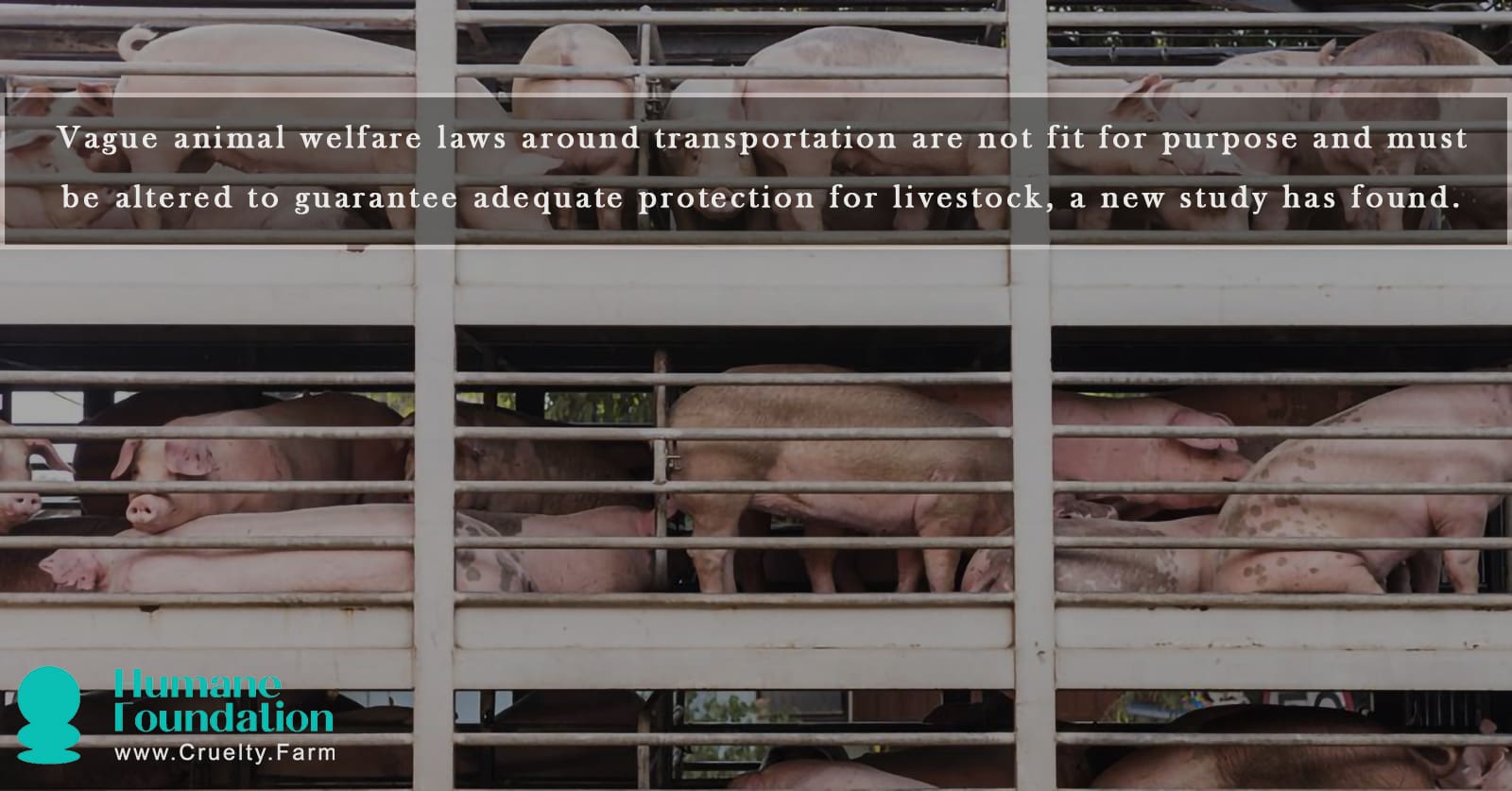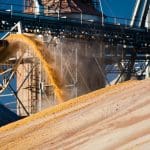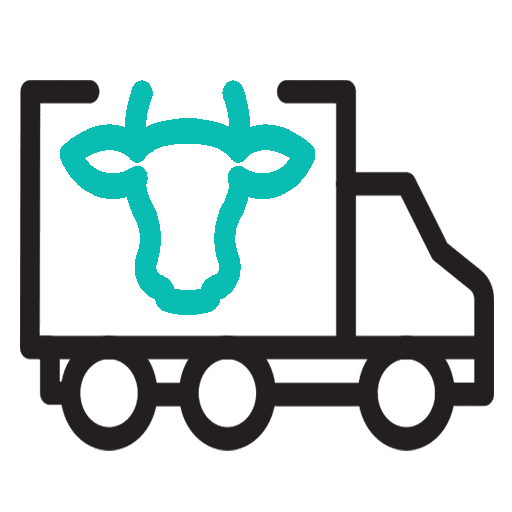pengenalan
Eksport langsung, perdagangan haiwan hidup untuk disembelih atau digemukkan lagi, merupakan isu pertikaian yang telah mencetuskan perdebatan di seluruh dunia. Walaupun penyokong berhujah bahawa ia memenuhi permintaan pasaran dan meningkatkan ekonomi, pihak lawan menyerlahkan kebimbangan etika dan perjalanan mengerikan yang dialami haiwan. Antara yang paling terjejas ialah haiwan ternakan, tertakluk kepada pelayaran berbahaya merentasi lautan dan benua, sering menghadapi keadaan mimpi ngeri. Esei ini menyelidiki realiti gelap eksport secara langsung, menjelaskan penderitaan yang ditanggung oleh makhluk hidup ini semasa perjalanan mereka.
Kekejaman Pengangkutan
Fasa pengangkutan dalam proses eksport hidup mungkin merupakan salah satu aspek yang paling menyedihkan bagi haiwan ternakan. Dari saat mereka dimuatkan ke dalam trak atau kapal, pengalaman pahit mereka bermula, ditandai dengan keadaan yang sempit, suhu yang melampau, dan kekurangan yang berpanjangan. Bahagian ini akan menyelidiki kekejaman yang wujud dalam pengangkutan haiwan ternakan untuk dieksport secara langsung.

Keadaan Sempit: Haiwan ternakan yang ditakdirkan untuk dieksport secara langsung selalunya dibungkus rapat ke dalam kenderaan atau peti, dengan sedikit ruang untuk bergerak atau berbaring dengan selesa.
Kesesakan ini bukan sahaja menyebabkan ketidakselesaan fizikal tetapi juga meningkatkan tahap tekanan, kerana haiwan tidak dapat menunjukkan tingkah laku semula jadi seperti meragut atau bersosial. Dalam keadaan yang sesak, kecederaan dan dipijak adalah perkara biasa, memburukkan lagi penderitaan makhluk-makhluk yang berperasaan ini. Suhu Melampau: Sama ada diangkut melalui darat atau laut, haiwan ternakan tertakluk kepada keadaan persekitaran yang keras yang boleh berkisar daripada panas terik hingga sejuk beku.
Pengudaraan yang tidak mencukupi dan kawalan iklim pada trak dan kapal mendedahkan haiwan kepada suhu yang melampau, yang membawa kepada tekanan haba, hipotermia, atau bahkan kematian. Lebih-lebih lagi, semasa perjalanan jauh, haiwan mungkin kehilangan naungan atau tempat perlindungan yang penting, meningkatkan ketidakselesaan dan kelemahan mereka. Kekurangan Berpanjangan: Salah satu aspek pengangkutan yang paling menyedihkan untuk haiwan ternakan ialah kekurangan makanan, air dan rehat yang berpanjangan.
Banyak perjalanan eksport secara langsung melibatkan perjalanan berjam-jam atau bahkan berhari-hari, di mana haiwan mungkin pergi tanpa nafkah penting. Dehidrasi dan kebuluran adalah risiko yang ketara, ditambah lagi dengan tekanan dan kebimbangan semasa berpantang. Kekurangan akses kepada air juga meningkatkan kemungkinan penyakit berkaitan haba, seterusnya menjejaskan kebajikan haiwan ini. Pengendalian Kasar dan Tekanan Pengangkutan: Memuat dan memunggah haiwan ternakan ke dalam trak atau kapal selalunya melibatkan pengendalian kasar dan paksaan yang kuat, menyebabkan trauma dan kesusahan tambahan.
Pemandangan, bunyi dan pergerakan kenderaan pengangkutan yang tidak dikenali boleh menyebabkan panik dan kebimbangan pada haiwan, memburukkan lagi kebajikan mereka yang telah terjejas. Tekanan pengangkutan, yang dicirikan oleh peningkatan kadar denyutan jantung, gangguan pernafasan, dan perubahan hormon, seterusnya menjejaskan kesihatan dan kesejahteraan haiwan ini, menjadikan mereka lebih terdedah kepada penyakit dan kecederaan. Penjagaan Veterinar yang Tidak Mencukupi: Walaupun terdapat risiko dan cabaran pengangkutan, banyak perjalanan eksport secara langsung tidak mempunyai penjagaan dan pengawasan veterinar yang mencukupi. Haiwan yang sakit atau cedera mungkin tidak menerima rawatan perubatan tepat pada masanya, membawa kepada penderitaan yang tidak perlu dan juga kematian. Tambahan pula, tekanan pengangkutan boleh memburukkan lagi keadaan kesihatan yang sedia ada atau menjejaskan sistem imun, menyebabkan haiwan terdedah kepada penyakit berjangkit dan penyakit lain.
Pelayaran Laut
Pelayaran laut untuk haiwan ternakan mewakili babak yang gelap dan menyedihkan dalam perjalanan mereka, dicirikan oleh pelbagai kengerian dan penderitaan.
Pertama, kurungan yang dialami oleh haiwan semasa pengangkutan laut adalah sangat kejam. Dikemas rapat ke dalam dek berbilang peringkat kapal kargo, mereka dinafikan kebebasan bergerak dan ruang yang penting untuk kesejahteraan mereka. Keadaan yang sempit membawa kepada ketidakselesaan fizikal dan tekanan psikologi, kerana haiwan tidak dapat terlibat dalam tingkah laku semula jadi atau melarikan diri dari persekitaran yang menindas.
Tambahan pula, kekurangan pengudaraan yang mencukupi memburukkan lagi keadaan yang sudah teruk. Kapal kargo sering kekurangan sistem pengudaraan yang betul, mengakibatkan kualiti udara yang tidak baik dan suhu yang menyekat di dalam kurungan. Dalam keadaan sedemikian, haiwan berjuang untuk mengawal suhu badan mereka, yang membawa kepada tekanan haba, dehidrasi, dan masalah pernafasan. Suhu melampau yang dialami semasa pelayaran laut, terutamanya di kawasan beriklim tropika, menambahkan lagi penderitaan makhluk yang terdedah ini.
Keadaan tidak bersih di atas kapal kargo menimbulkan ancaman tambahan kepada kebajikan haiwan. Sisa terkumpul, termasuk najis dan air kencing, mewujudkan tempat pembiakan penyakit, meningkatkan risiko penyakit dan jangkitan di kalangan haiwan. Tanpa akses kepada langkah sanitasi yang betul atau penjagaan veterinar, haiwan yang sakit dan cedera dibiarkan menderita dalam diam, nasib mereka diburukkan lagi dengan sikap acuh tak acuh mereka yang bertanggungjawab terhadap penjagaan mereka.
Lebih-lebih lagi, tempoh pelayaran laut hanya menambah pengalaman pahit yang ditanggung oleh haiwan ternakan. Banyak perjalanan menjangkau hari atau bahkan minggu, di mana haiwan mengalami tekanan, ketidakselesaan dan kekurangan yang berterusan. Kebosanan tanpa henti dalam kurungan, digabungkan dengan pergerakan laut yang tidak henti-henti, menjejaskan kesejahteraan fizikal dan mental mereka, menyebabkan mereka terdedah kepada keletihan, kecederaan dan putus asa.
Kelemahan Undang-undang dan Kekurangan Pengawasan
Industri eksport langsung beroperasi dalam landskap kawal selia yang kompleks, di mana kelemahan undang-undang dan pengawasan yang tidak mencukupi menyumbang kepada penderitaan berterusan haiwan ternakan. Walaupun terdapat beberapa peraturan yang mengawal pengangkutan haiwan, langkah-langkah ini sering gagal dalam menangani cabaran unik yang ditimbulkan oleh eksport langsung.
















































